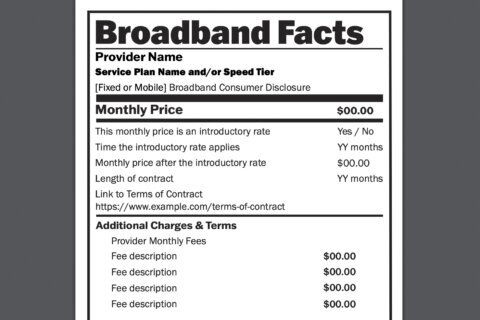WASHINGTON — Are you a winner or a loser under the new tax proposals?
The House and Senate are spending the next few weeks attempting to reconcile their two bills, hoping to revamp the corporate and personal tax code. While the final details of what may show up on President Trump’s desk are unclear, everyone has been guessing whether they will see tax increases or tax cuts.
How will you be affected by proposed changes if they were to take affect? Some new tools have emerged over the past week that can help you evaluate your bottom line, and may make some year-end moves worth considering.
Here are the best calculators to examine your own situation and determine your tax scenario.
The Wall Street Journal
The one major drawback of this tax calculator is that you need to have a Wall Street Journal login to view the article, but once you’re in, it’s great. It breaks down the basic factors needed to determine your new tax liability, giving you your savings number at the top, while allowing you to make quick updates to amendments and see how they might affect that top number.
The positive? This calculator easily lets you see how different factors affect your bottom line, and even allows you to view preset profiles to know how the rest of the world is doing. The negative? You need to subscribe.
Tax Reform Calculator
This is the most comprehensive of the three calculators. It simply asks for your filing status, gross salary and tax state, and breaks down the House- and Senate-proposed reform. It also shows the current pre-reform situation. You can even select to use their advanced calculator, which factors in various witholdings and deductions.
The positive? This calculator is quite detailed, breaking down your taxes all the way to an hourly scale. The negative? Those results might be a bit too detailed if you’re looking for a simpler breakdown.
Tax Plan Calculator
This calculator is straightforward as well, asking for income, state, filing status, number of dependents and a rough estimate of your itemized deductions. Although it’s not as detailed as the previous calculator, this one gets straight to the point, easily laying out how much you will save under each plan.
The positive? It’s straight to the point and immediately gives you the bottom line. The negative? It’s not as detailed, and less precise with deductions.
Takeaways so far
In short, you’ll find that tax rates are going to be coming down, but that deductions will disappear. For some, these will offset each other, leaving a neutral impact. Others — especially modest- to high-income residents of high-tax areas such as Maryland and D.C. — will see some increases.
Keep in mind some caveats when using these calculators: These results may provide some insight. But so far, these changes aren’t law. Provisions will probably change almost daily. The tools also don’t look at an entire tax return, which would include details about student loan interest, interest on home equity lines of credit or mortgages on second homes.
Finally, it’s still too early to make assumptions of what may be in the final bill. You can use these calculators as resources to “get the gist,” but don’t make any concrete decisions until you see the final bill.
What to do before Dec. 31? Talk to your accountant or financial adviser. Make sure they are helping you plan for whatever lies ahead, and that you are in the best position to adjust as necessary.






